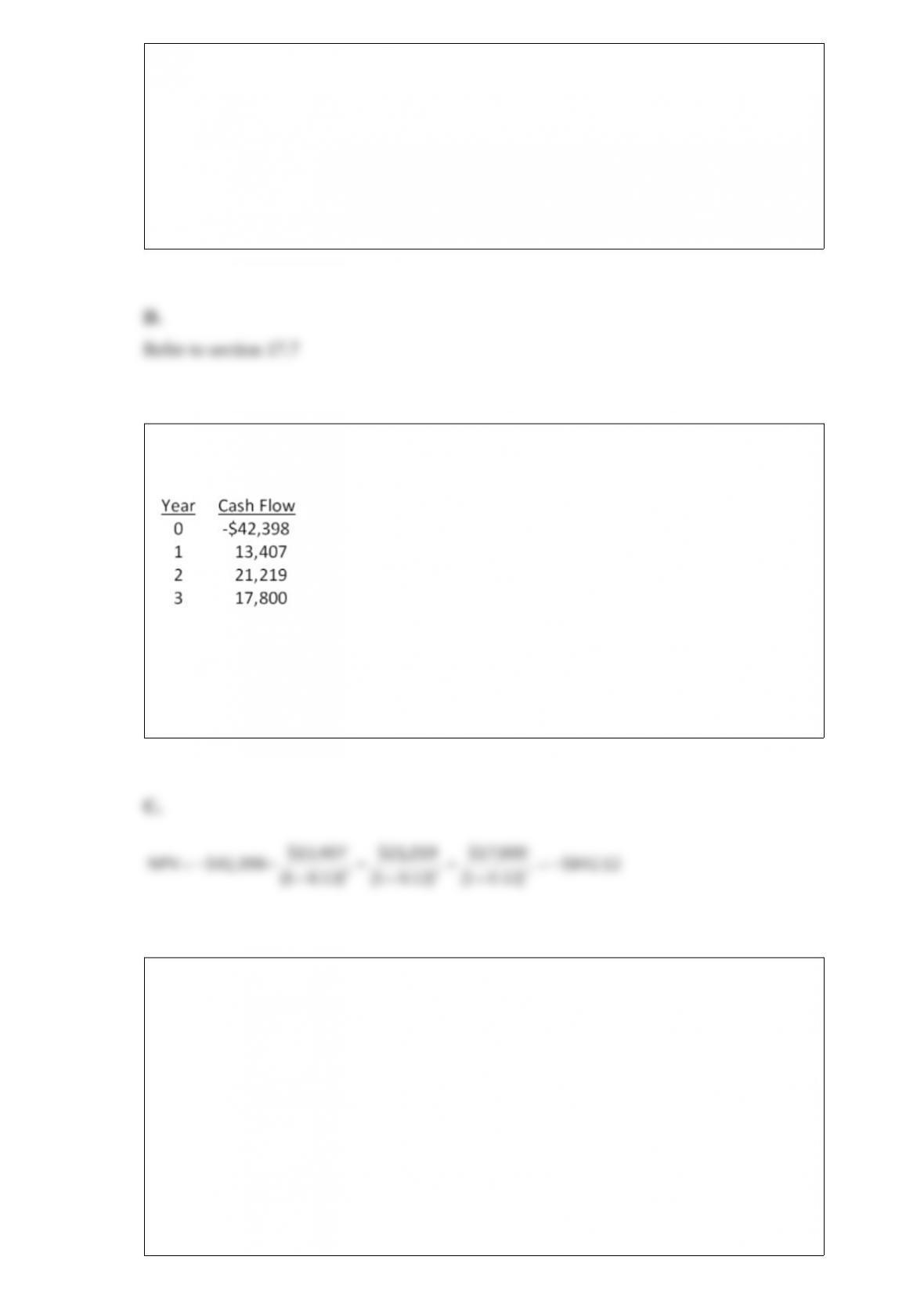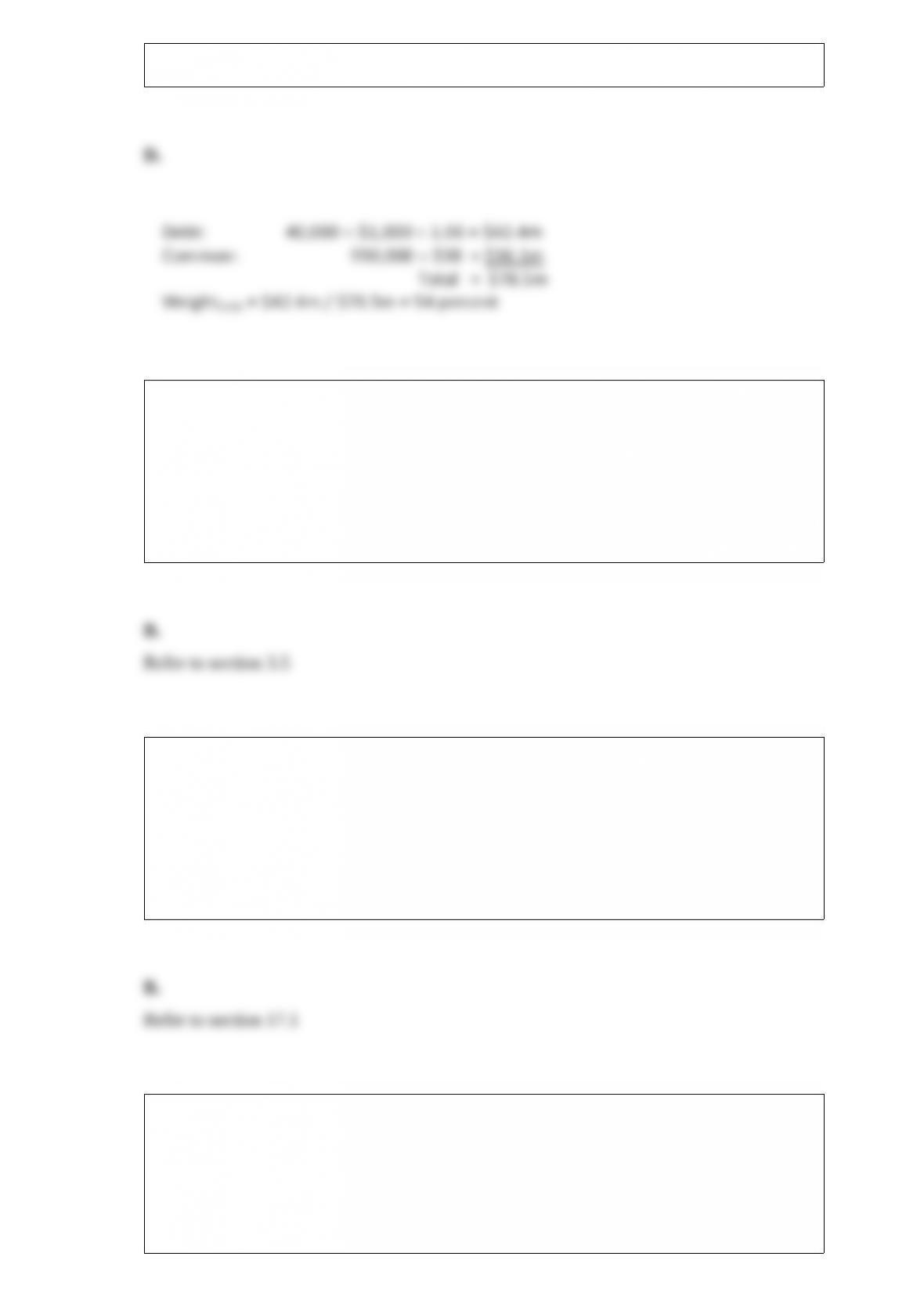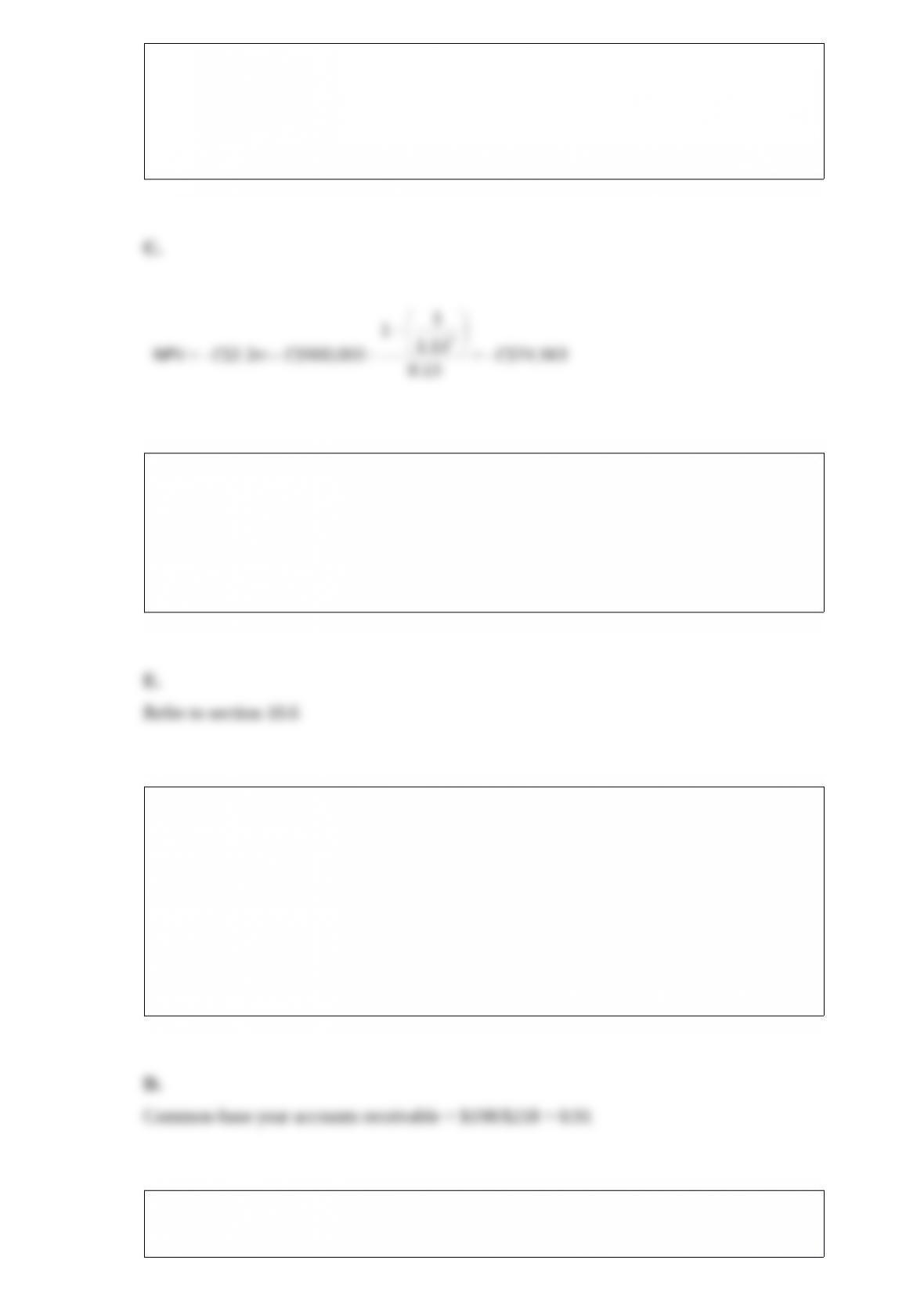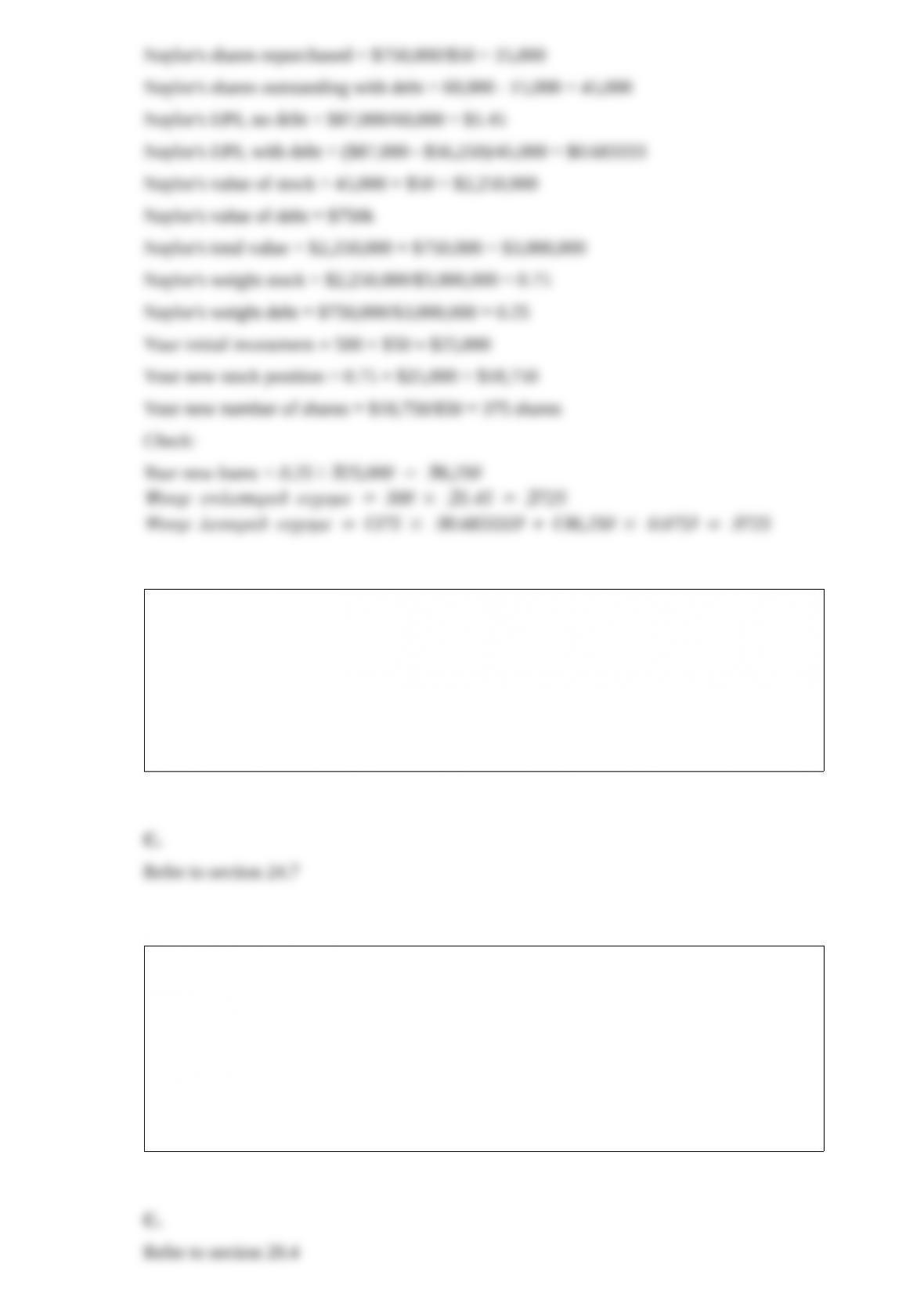Assume each month has 30 days and a firm has a 60-day accounts receivable period.
During the second calendar quarter of the year, that firm will collect payment for the
sales it made during which of the following months?
A. October, November, and December
B. November, December, and January
C. December, January, and February
D. January, February, and March
E. February, March, and April
Preston Industries has two separate divisions. Each division is in a separate line of
business. Division A is the largest division and represents 70 percent of the firm's
overall sales. Division A is also the riskier of the two divisions. Division B is the
smaller and least risky of the two. When management is deciding which of the various
divisional projects should be accepted, the managers should:
A. allocate more funds to Division A since it is the largest of the two divisions.
B. fund all of Division B's projects first since they tend to be less risky and then allocate
the remaining funds to the Division A projects that have the highest net present values.
C. allocate the company's funds to the projects with the highest net present values based
on the firm's weighted average cost of capital.
D. assign appropriate, but differing, discount rates to each project and then select the
projects with the highest net present values.
E. fund the highest net present value projects from each division based on an allocation
of 70 percent of the funds to Division A and 30 percent of the funds to Division B.
A stock has annual returns of 13 percent, 21 percent, -12 percent, 7 percent, and -6
percent for the past five years. The arithmetic average of these returns is _____ percent
while the geometric average return for the period is _____ percent.
A. 3.89; 3.62
B. 3.89; 4.60
C. 3.62; 3.89
D. 4.60; 3.62
E. 4.60; 3.89























